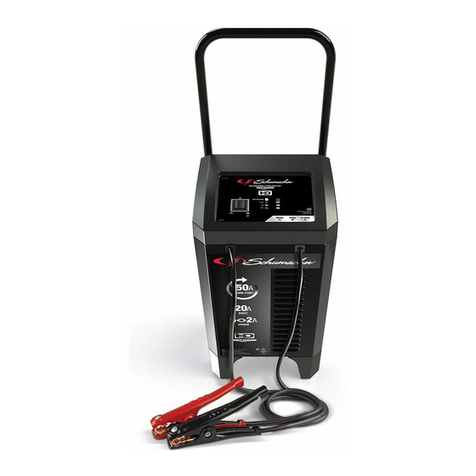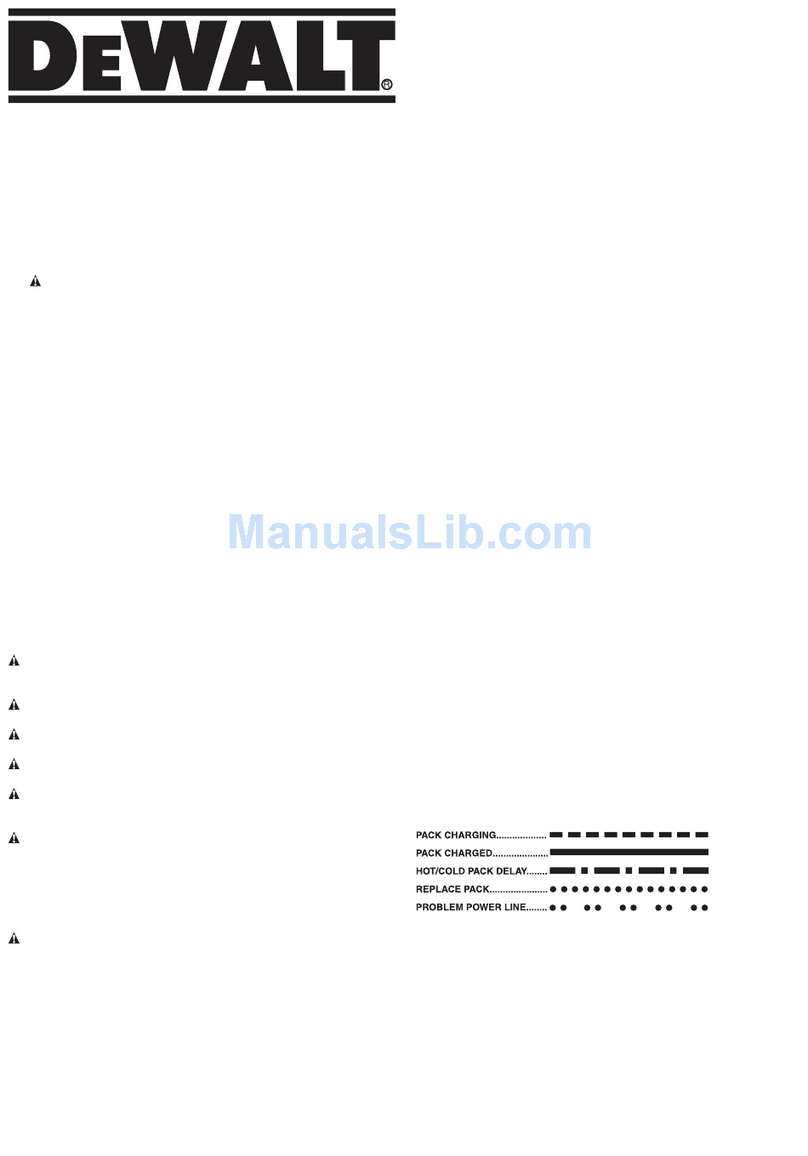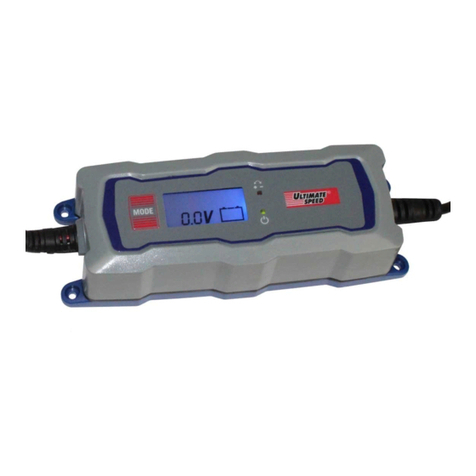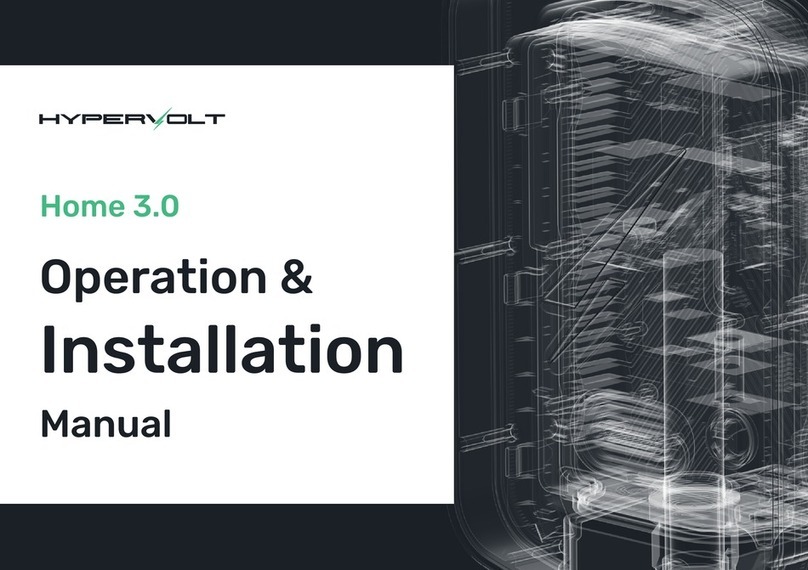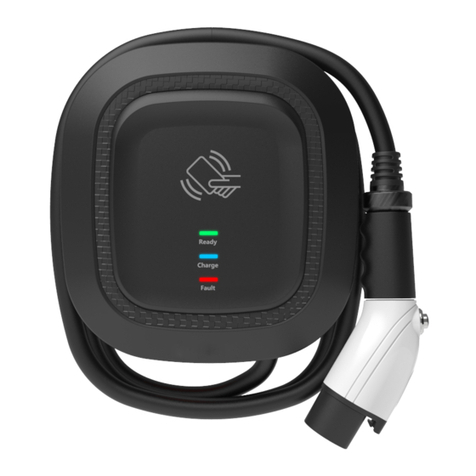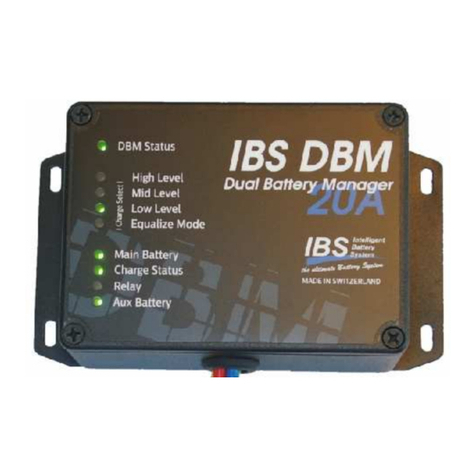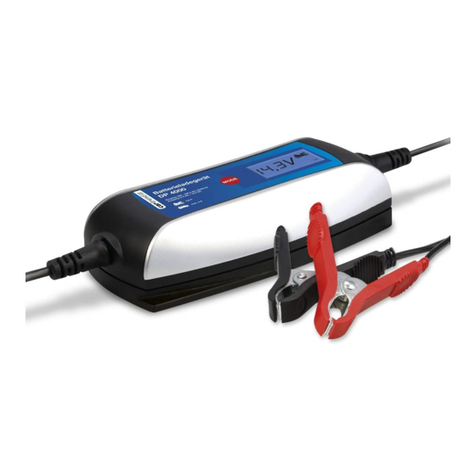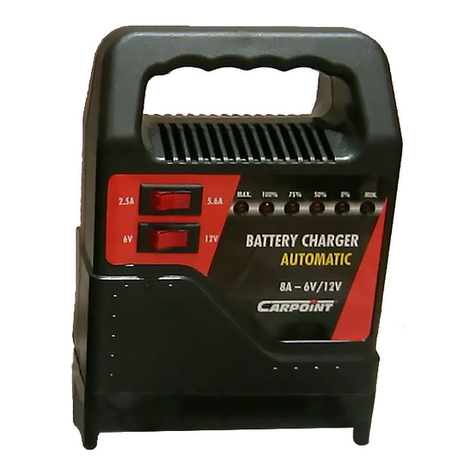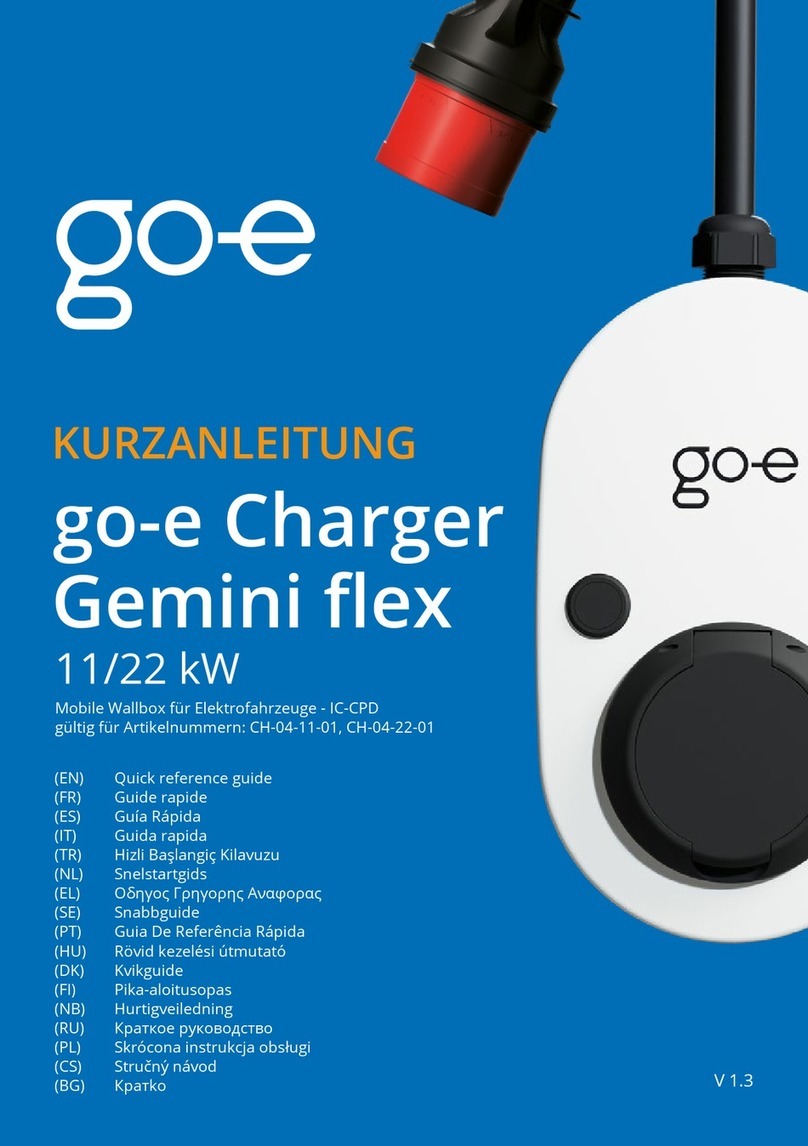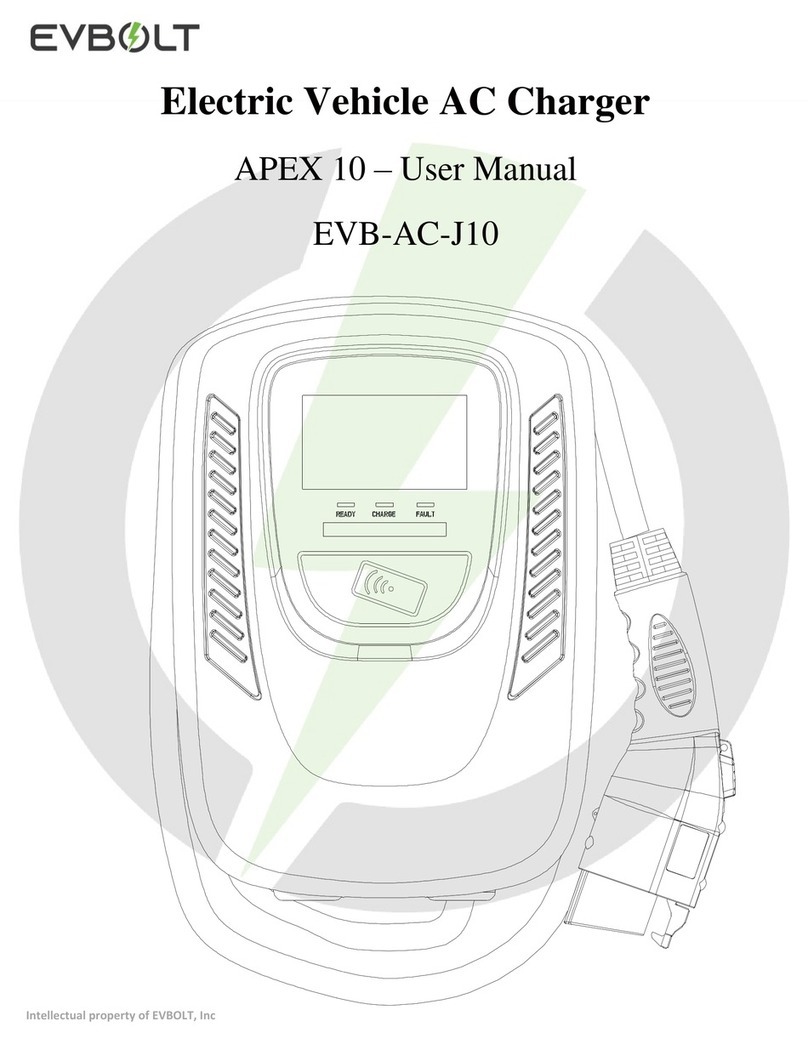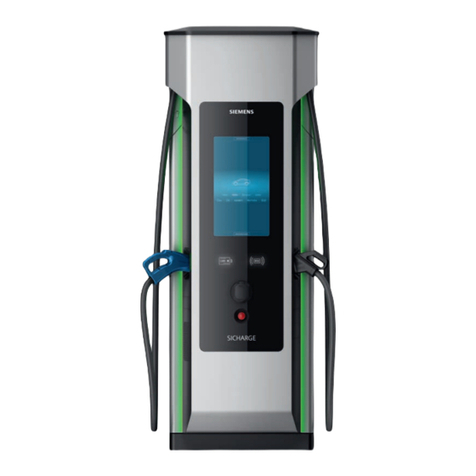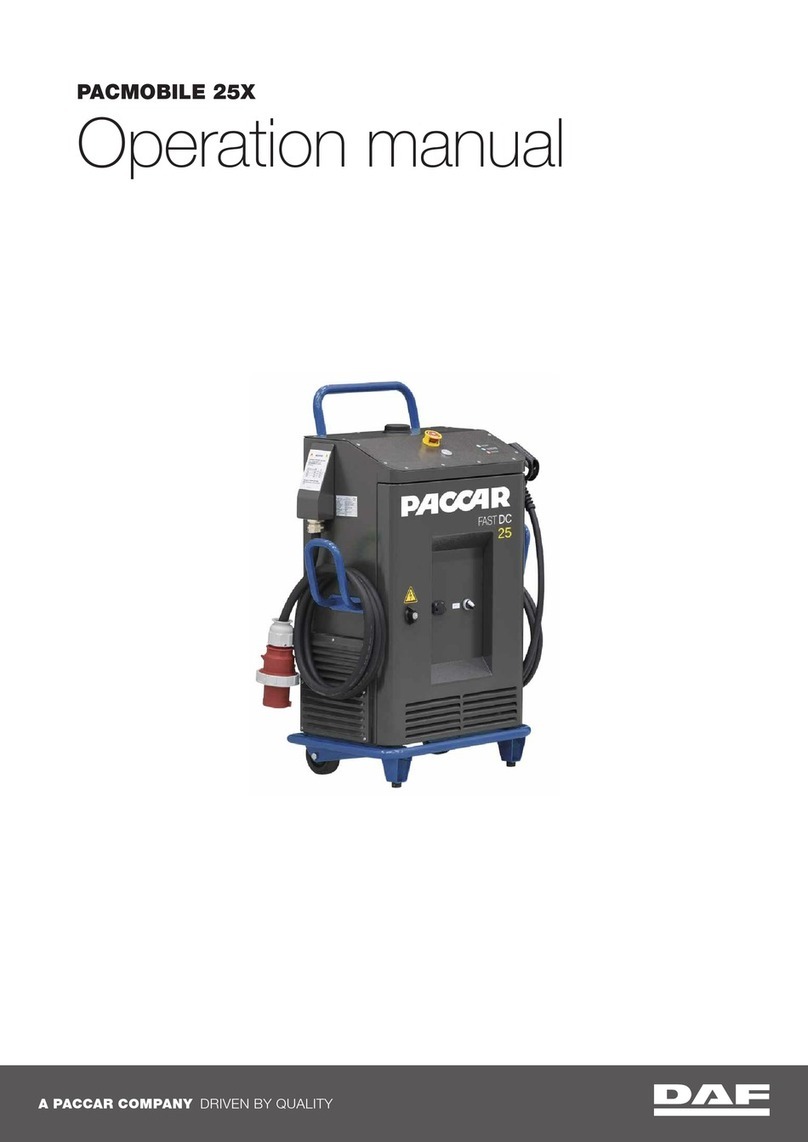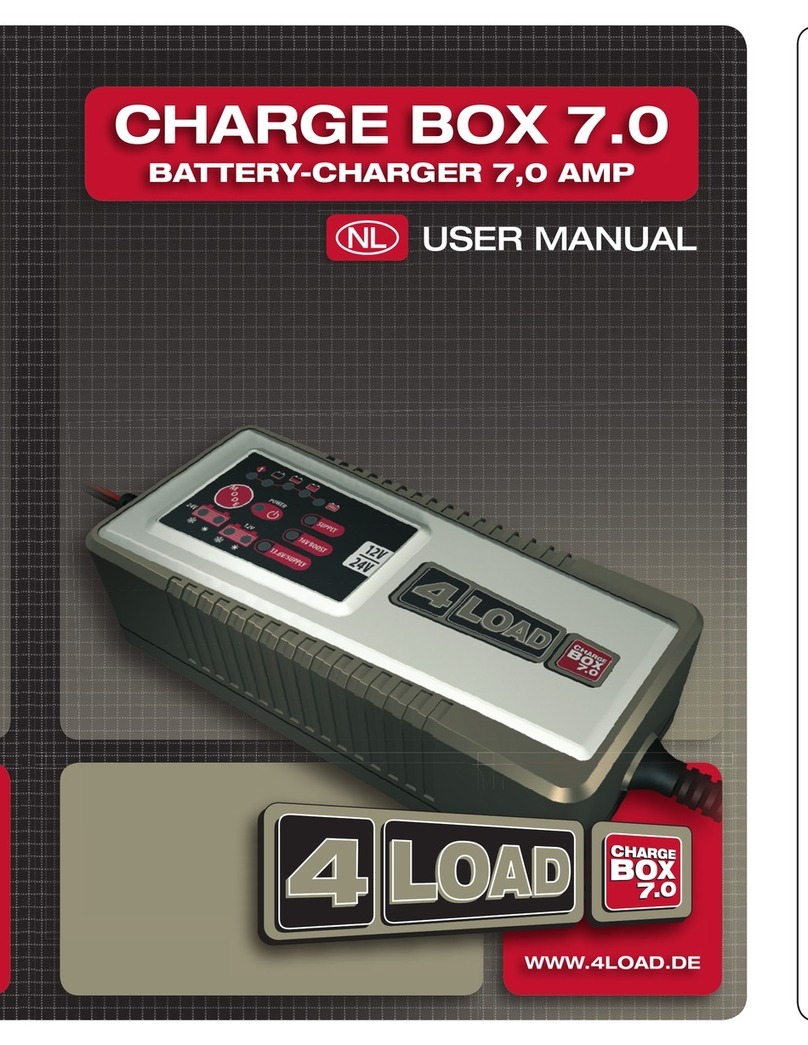
• 8•
USING THE QUICK-CONNECT CABLE CONNECTORS
Connect any of the output cable assemblies to the charger in seconds.
IMPORTANT
Never connect the clip and ring terminal connectors together for use in other
applications, such as external battery or other power source charging, or to
extend the output cable length, as reverse polarity and/or overcharge conditions will occur.
BATTERY CLAMP QUICK-CONNECT
1. Connect the end of the charger output cable to the end of the battery clamp quick-connect.
2. Follow the steps in sections 6 and 7 to connect the clamps to the battery.
3. After a good electrical connection is made to the battery, plug the power cord into an AC
electrical wall outlet. Make sure to place the charger on a dry, non-ammable surface.
4. When the charger starts, the GREEN LED will be solid, and the display will show
ANALYZING BATTERY while the charger determines that the battery is properly
connected and the condition of the battery.
5. When the battery is fully charged, the GREEN LED will pulse.
6. When charging is complete, disconnect the AC cord from the supply mains, remove the
clamp from the vehicle’s chassis, and then remove the clamp from the battery terminal.
RING TERMINAL QUICK-CONNECT
The ring connectors permanently attach to the battery, providing easy access to quickly
charge your battery. This application is appropriate for motorcycles, lawn tractors, ATVs
and snowmobiles.
1. To permanently attach to a battery, loosen and remove each nut from the bolts at the
battery terminals.
2. Connect the red positive connector ring to the positive (POS, P, +) battery terminal.
3. Connect the negative connector ring to the negative (NEG, N, -) battery terminal.
4. Replace and tighten the nuts to secure them.
5. Connect the ring connector cable assembly to the charger. Take care to keep both wires
and plug away from hot and moving parts.
6. Plug the charger power cord into an AC electrical wall outlet. Make sure to place the
charger on a dry, non-ammable surface.
7. When the charger starts, the GREEN LED will be solid, and the display will show
ANALYZING BATTERY while the charger determines that the battery is properly
connected and the condition of the battery.
8. When the battery is fully charged, the GREEN LED will pulse.
9. When charging is complete, disconnect the AC cord from the supply mains, remove the
negative connector, and nally the positive connector.
BATTERY CONNECTION INDICATOR
If the charger does not detect a properly connected battery, charging will not start and the digital
display will show one of two messages. If the display shows CONNECT CLAMPS, make sure
the charger is connected to the battery and the connection points are clean and making a good
connection. If the display shows WARNING CLAMPS REVERSED, unplug the charger from the
AC outlet, reverse the connections at the battery, and then plug the charger back in.
BATTERY CHARGING TIMES
CCA = Cold Cranking Amps Ah = Amp Hour
BATTERY SIZE/RATING CHARGE TIME (6A)
SMALL BATTERIES
Motorcycle, garden tractor, etc. 6-12 Ah ¾-1¼ h
12-32 Ah 1¼-3¼ h
CARS AND
TRUCKS
200-315 CCA 40-60 Ah 3¼-4¾ h
315-550 CCA 60-85 Ah 4¾-6 h
550-1000 CCA 85-130 Ah 6-11½ h
MARINE/DEEP-CYCLE
80 Ah 6 h
140 Ah 9 h
160 Ah 10 h
180 Ah 11 h
Times are based on a 50% discharged battery and may change, depending on age and condition of battery.
